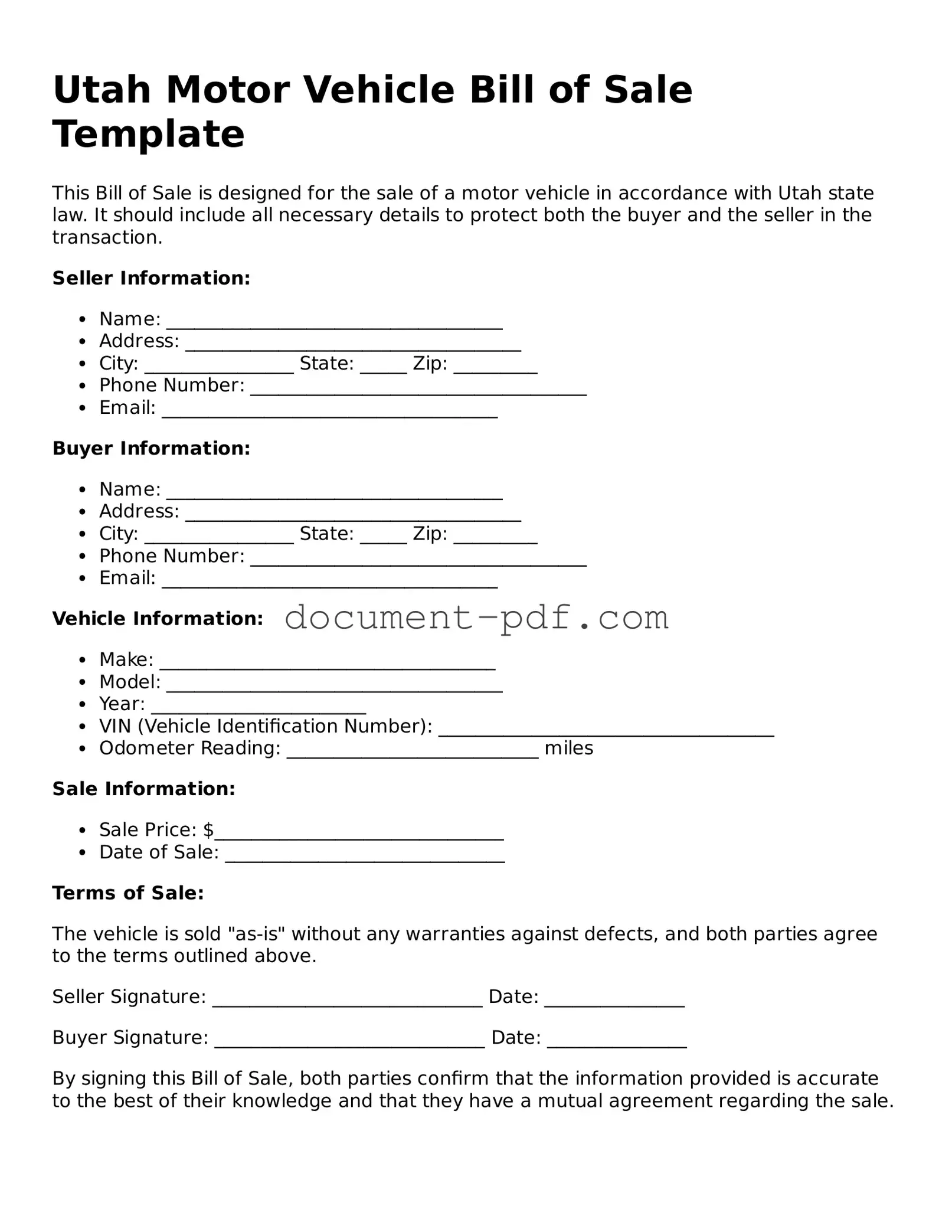Utah Motor Vehicle Bill of Sale Template
This Bill of Sale is designed for the sale of a motor vehicle in accordance with Utah state law. It should include all necessary details to protect both the buyer and the seller in the transaction.
Seller Information:
- Name: ____________________________________
- Address: ____________________________________
- City: ________________ State: _____ Zip: _________
- Phone Number: ____________________________________
- Email: ____________________________________
Buyer Information:
- Name: ____________________________________
- Address: ____________________________________
- City: ________________ State: _____ Zip: _________
- Phone Number: ____________________________________
- Email: ____________________________________
Vehicle Information:
- Make: ____________________________________
- Model: ____________________________________
- Year: _______________________
- VIN (Vehicle Identification Number): ____________________________________
- Odometer Reading: ___________________________ miles
Sale Information:
- Sale Price: $_______________________________
- Date of Sale: ______________________________
Terms of Sale:
The vehicle is sold "as-is" without any warranties against defects, and both parties agree to the terms outlined above.
Seller Signature: _____________________________ Date: _______________
Buyer Signature: _____________________________ Date: _______________
By signing this Bill of Sale, both parties confirm that the information provided is accurate to the best of their knowledge and that they have a mutual agreement regarding the sale.
